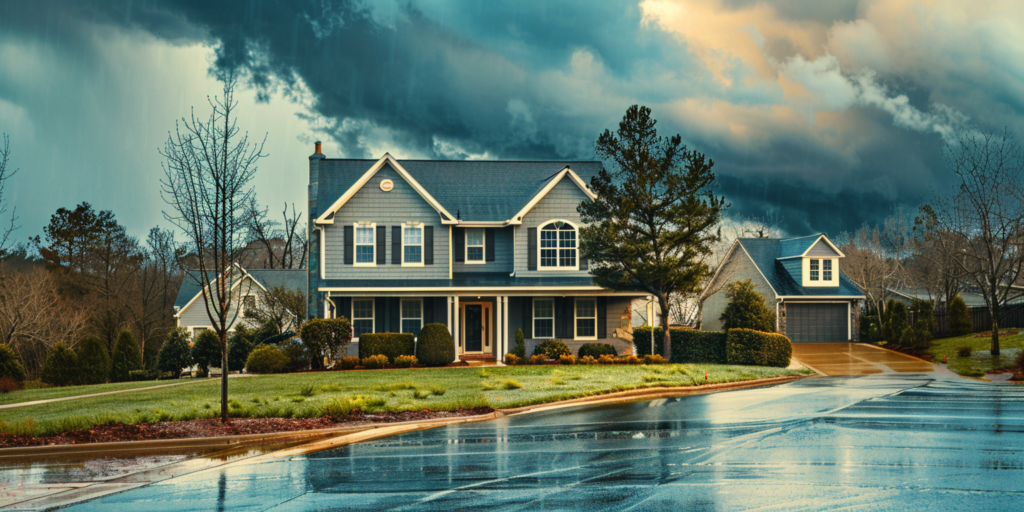Wind and thunderstorms can wreak havoc on any area. When it comes to your home, it can be scary thinking about how the weather can affect it. More specifically, there are various ways that violent storms can cause issues with your roof.
1- Missing Shingles
When heavy gusts of wind come into contact with the shingles on your roof, they can cause damage. When shingles lift up, the wind can easily tear them off of your roof. When shingles go missing, it exposes the underlayers of your roof to the elements. This can quickly lead to excessive water damage and structural issues if left too long. It’s best to call in a roofing professional as soon as you notice missing shingles after a bad storm.
2- Stuffed Gutters
When a really nasty storm blows through, it can cause leaves and other debris to fly up onto your roof. Unfortunately, as the water flows down your roof and into the gutter, it will carry this debris along with it. You can experience gutters stuffed full of debris that can highly minimize their ability to drain properly. If this debris makes its way into your downspouts, it’s likely to create even more of a clog. Cleaning out those stuffed gutters sooner rather than later is your best bet.
3- Tree Damage
In cases of very high winds, tree branches can break off. Even some well-rooted trees may be ripped out of the ground. When they land on your roof, they can create a massive amount of damage. From replacing the broken shingles to laying down new underlayments, tree damage can be costly.
4- Missing or Ripped Flashing
Flashing is a metal material that is typically used around rooftop features like chimneys, valleys, and vent pipes. Its job is to simply allow water to run down off the feature and onto your existing shingles. When any piece of flashing gets ripped up or goes completely missing, you need to get it replaced before your roof experiences another weather event. Otherwise, you’re leaving your roof susceptible to unnecessary water damage.
5- Hail Damage
Hail can be a big problem, especially when it reaches record levels. These hard balls of frozen water can come down with such force. When they hit the shingles on your roof, they can cause cracking and other damage. It’s always a good idea to inspect your shingles after a hail storm to see if there is any damage caused.
6- Water Damage
While your roof may seem to perform well during your average rainstorm, it’s not uncommon for a massive storm to showcase areas of water damage. During heavy storms, rain can be blown at a high force from many different angles. This can cause it to get into susceptible areas of your roof that aren’t normally affected by pleasantly falling rain.
After a large storm passes through your area, it’s a good idea to assess your roof for damage. The high winds and unexpected precipitation associated with thunderstorms can lead to many of the roof issues that we went over above.




